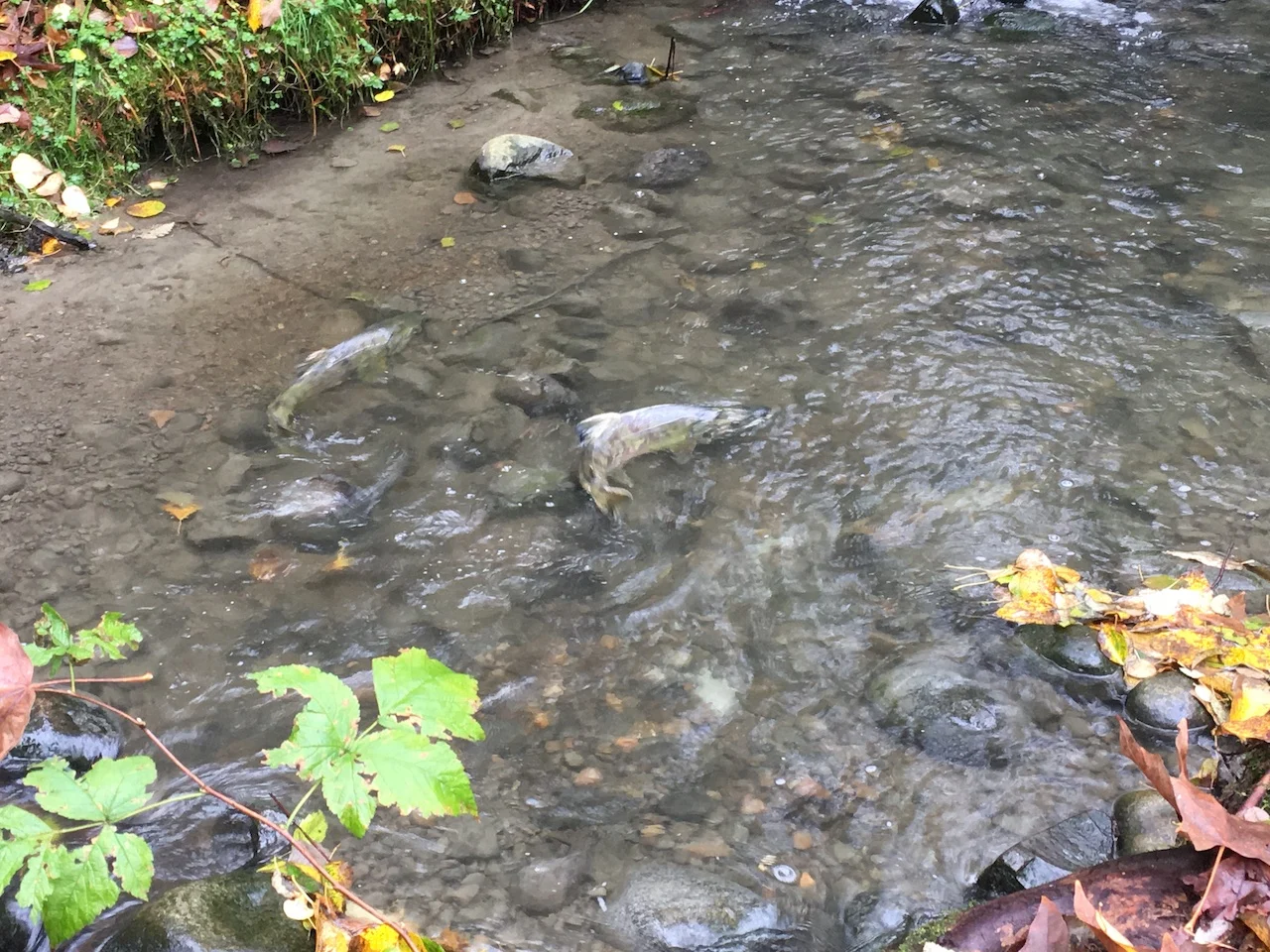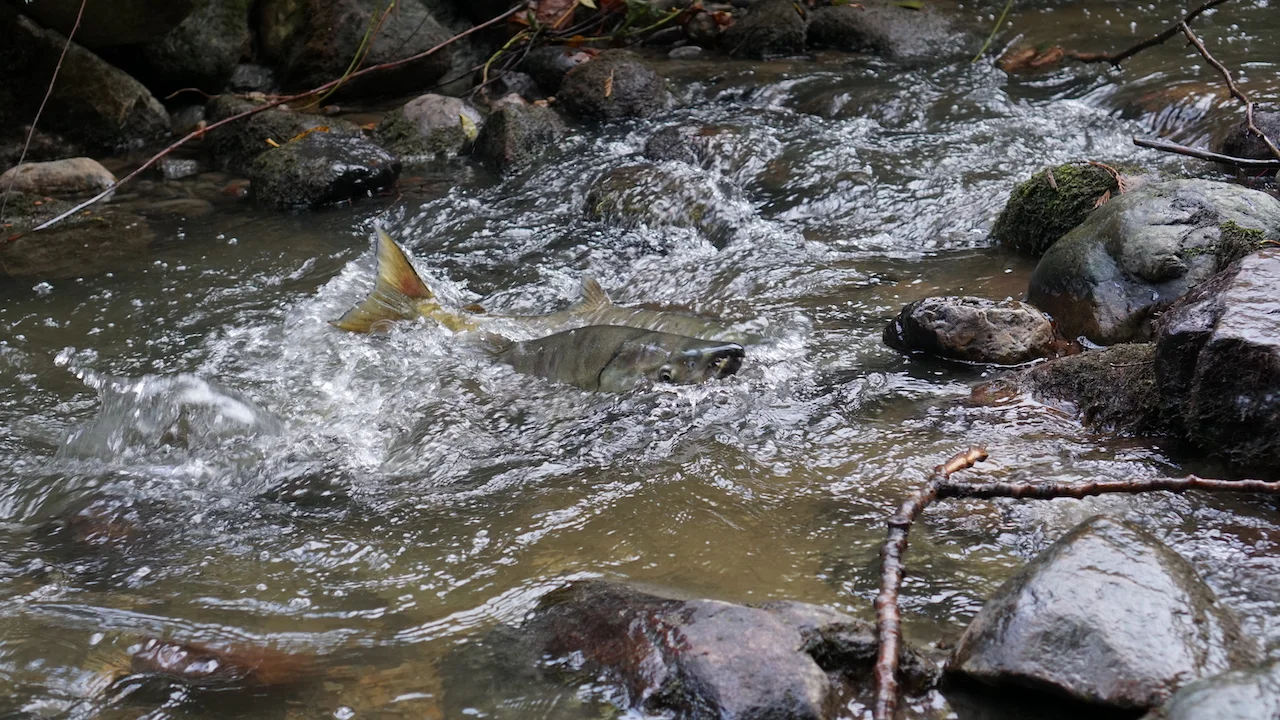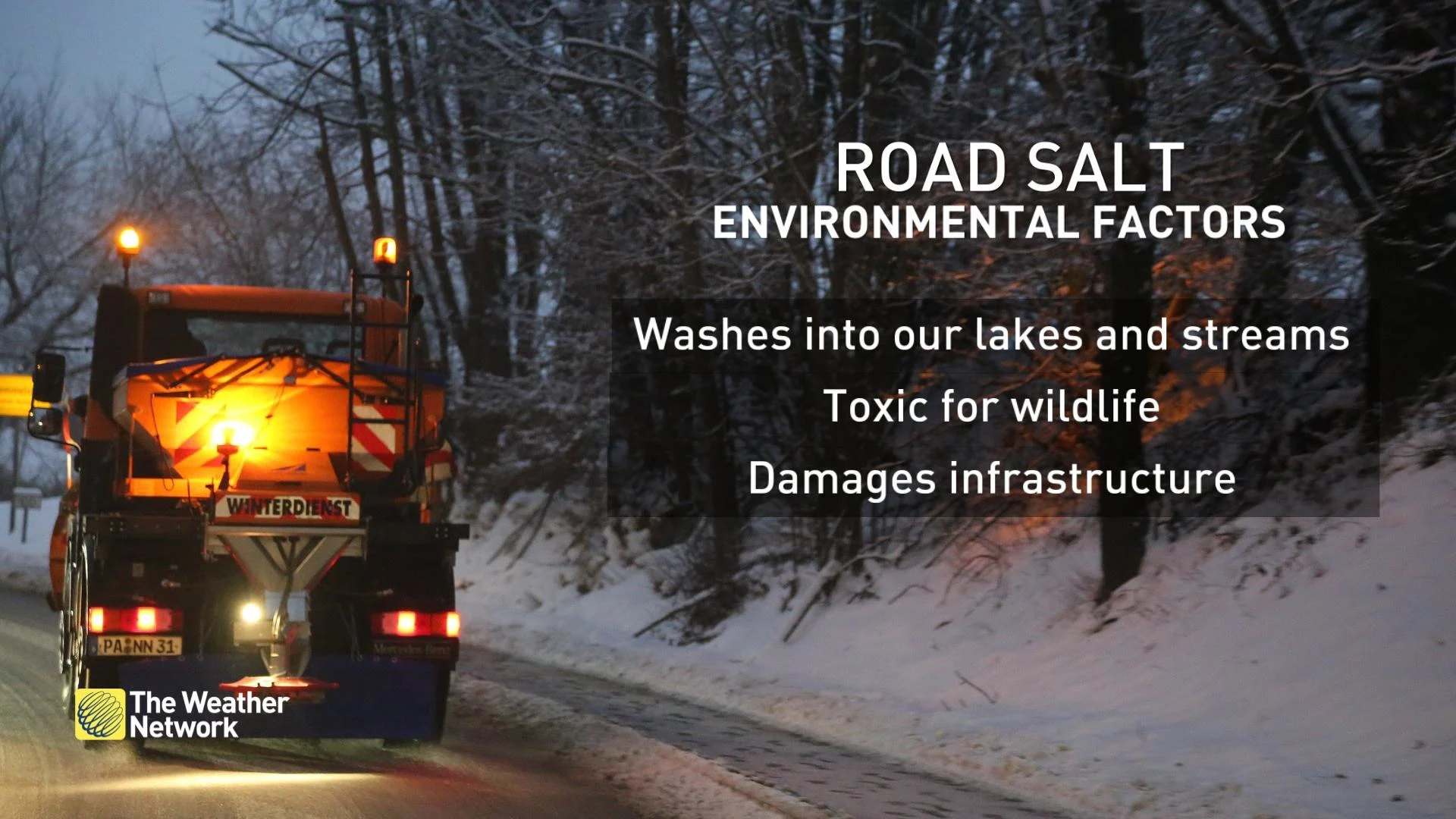
Is road salt hurting salmon? UBC and volunteers are investigating
With Pacific salmon population numbers dwindling, could road salt be contributing to the decline? The University of British Columbia has teamed up with volunteer groups to find out definitively.
The potential environmental impacts from road salt have been widely documented, including negative effects on wildlife, so it stands to reason that salmon could be on the receiving end of it.
Could too much road salt in the streams be one of the causes of declining Pacific salmon numbers? Well, that's what the University of British Columbia (UBC) is hoping to determine with absolute certainty.
SEE ALSO: B.C. fish are making a splash after newfound freedom
Researchers Patricia Schulte, Chris Wood and Colin Brauner are leading the initiative, joining forces with community groups to investigate road salt in streams and whether it could be harming Pacific salmon. They are looking into the seasonal impact of road salt in more than 20 streams around the Lower Mainland, as well as growing baby salmon from eggs in high saltwater in the lab.
Road salt can take a toll on vehicles, infrastructure and the environment, mainly from the inevitable melt that occurs in the spring.

(Alex Walls/University of British Columbia)
"When the ice melts, it washes off the roads and gets into groundwater and runs across the surface into rivers and streams. And it's not like you could taste salt in the streams, but there's enough salt in there that it can be harmful to fish," said Schulte in a recent interview with The Weather Network.
Salt's effects on fish and other wildlife
While not a lot is known about the effects of road salt on Pacific salmon currently, it can stunt the growth of other closely related species such as the Atlantic salmon and the rainbow trout, Schulte said.
"It can reduce their survival and it can just make them generally unhealthy and less successful. So it's a real problem," said Schulte. "Here in B.C...the [Pacific salmon] babies are born in the fall and they grow through the winter as little fish and the salt can harm them at that stage."
It isn't just fish that road salt can negatively impact. It can have different effects on other wildlife, too, she said.

(Alan James)
The presence of salt in the water can adversely affect frogs and turtles, while any that accumulates on the side of the roads can be absorbed by plants, which are then eaten by insects such as butterflies, also reducing their survival, Schulte added.
"It can cause like behavioural changes because it kind of messes up their brains a little bit. For birds, for example, the main problem is the actual rock salt when the birds mistake it for grit. Birds like to eat grit because it helps them digest their food," said Schulte. "In birds, even a little bit of salt can be dangerous."
For bigger wildlife such as moose and caribou, they enjoy the taste of salt, which is "like eating potato chips," so it attracts them to the roads where they become exposed to potential vehicle collisions, the UBC researcher said,
"It sort of depends on the animal, on what the effects are. But there are negative effects across lots of different kinds of animals," said Schulte.
WATCH: The truth behind using salt in the winter, little facts you never knew
Road salt usage in Canada is rising: Schulte
In 2020-21, at least 4.7 million tonnes of road salt was used across the country, according to data provided to The Weather Network from Environment and Climate Change Canada (ECCC). The total doesn't include users not covered by ECCC’s code of practice such as domestic, private or institutional consumers, road organizations using less than 500 tonnes per year and Quebec, since it has its own strategy that records amounts.
In a media release, Schulte said road salt use in Canada is increasing at about 2.5 per cent per year. In Vancouver, B.C., the city has 3,000 tonnes of salt in its yards for winter maintenance on streets and sidewalks.
Of the amount of road salt used in the country in 2020-21, at least 831,242 tonnes of it were documented in B.C., according to ECCC.

While scientists aren't 100 per cent certain road salt is affecting salmon, "we're pretty sure that it is," she said, noting there isn't a lot of monitoring of salt in water in B.C. currently.
However, the observations seen so far suggest that at least some creeks around the Lower Mainland, including in the Metro Vancouver area, have enough salt in the waters to be "occasionally" more than seven times the acute toxic limit, and potentially as much as 28 times beyond the chronic toxic limit, Schulte added.
"That's where long-term exposure could harm the fish. So, we know that at least at some times of the year, the levels are getting high enough that it can be harmful," said Schulte. "We don't know exactly the harms, and it may differ between different kinds of fish."
Part of the issue is that salt doesn't enter the water continuously, but rather in pulses, especially in the Lower Mainland, she said, as it isn't used every day during the winter. "People haven't really studied the effect of these pulses as much. They've more so done a longer-term toxicity [review]," said Schulte.
Volunteers helping UBC uncover the possible impacts
Alan James, a volunteer streamkeeper with the Stoney Creek Environment Committee (SCEC) based in Burnaby, B.C., told The Weather Network recently the group has been examining the salt in the watercourse since 2005.
The committee conducted its own study in the creek by putting salmon eggs in two different parts of it, James said. One section of it was contaminated by salt and the other was clean, with results showing there were differences. The analysis prompted a change in road salt usage from Simon Fraser University, but not all of it has been removed from the ground.

(Alex Walls/University of British Columbia)
"We've been looking at trying to find ways to deal with that and to understand just what the effect of salt is on the fish. And of course, citizen science is great, but it's not sufficient to move large organizations," said James.
As a streamkeeper, James and his fellow SCEC members do counts of returning salmon in the fall and trap juveniles in the spring to see how many have hatched. The group also conducts studies on stream bugs to see what different species are in the watercourse -- indicative of its health, he noted.
"That will be something that is part of what we have been doing for some time as streamkeeping groups," said James. "We will add that information in a more co-ordinated fashion to the work that Tricia [Schulte] and others are doing at UBC, Simon Fraser and BCIT [British Columbia Institute of Technology]."
WATCH: The true dangers of road salt are far worse than you might have thought
Citizen scientists and volunteer groups such as SCEC gives UBC researchers the "boots on the ground experience" in terms of what's happening now, James said.
"[While] the largest issue is the road salt that's put [out] by large organizations [and] municipalities...there is a large amount of road salt that gets put into the creeks from private residences," said James. "So, shovel first, use less salt [and] sweeping up afterwards can reduce the amount of salt that gets into the environment."
How we can 'use it better'
Schulte cited a number of things we can do to help reduce salt usage in the winter. For example, we can use the same road salt we've always been employing, "but use it better."
"Store it more securely, so that it doesn't drain away from the storage areas. Use it less because usually [you] put on more than you really need. And only use it when it's really going to be helpful," said Schulte.
Other tips from UBC include:
You can use sand, which is more environmentally friendly, and grit
You can use other formulations including pet-friendly salts, which are thought to be less dangerous for animals, including salmon
When you’re salting your driveway, don’t put the road salt in clumps. Spread it out to achieve the same effect while using less salt
You can find other environmentally friendly alternatives to road salt, here.
WATCH: Why do we use road salt to melt snow and ice?
"There [are] a variety of things you can do, depending on the extent of the problem. And that's actually part of what we're trying to figure out in this research...just exactly how big is the problem," said Schulte.
"If the amount of salt we're using is not too terrible, then probably small adjustments in what we're doing will be fine. But if it's really bad, then we have to make bigger changes."
Thumbnail courtesy of Alan James.
Follow Nathan Howes on Twitter.











